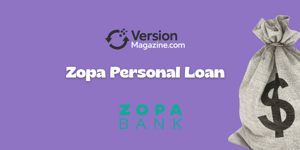Managing money can feel overwhelming, especially when accounts, bills, and subscriptions stack up. A clear, organized system not only reduces stress but also frees up time and energy to pursue your goals. In this guide, we’ll explore three straightforward steps to help you gain complete visibility into your finances and build a stronger financial foundation.
Step 1: Assess and Understand Your Current Financial Situation
Before making changes, you need a baseline. Start by gathering every piece of information related to your financial life. This includes checking and savings accounts, credit cards, personal and student loans, retirement plans, and any other assets or liabilities.
Review your monthly income sources and calculate your net income after taxes. List all expenses and categorize them into essentials—rent or mortgage, utilities, groceries—and non-essentials such as dining out, streaming services, and hobbies. Examine recent bank and credit card statements to uncover unnecessary or duplicated expenses you might have overlooked.
- List all account balances and interest rates for each debt.
- Break down monthly income vs. fixed and variable expenses.
- Identify spending patterns and small recurring charges.
As a benchmark, aim to allocate at least 10–20% of your income toward savings. Creating a comprehensive financial snapshot at this stage will serve as a reference point to measure your progress.
Step 2: Simplify, Prune, and Prioritize
With a clear picture of where your money flows, it’s time to eliminate clutter. Unsubscribe from services you rarely use, and consider downgrading plans or switching providers for utilities, phone, and internet to secure better rates.
Next, consolidate or close redundant accounts. Having multiple checking or savings accounts can lead to confusion and make fraud harder to detect. Aim to maintain just one or two accounts of each type, so your money is easier to monitor and manage.
- Cancel unused subscriptions and memberships.
- Migrate small balances into primary accounts before closing extras.
- Focus your budget by planning purchases and using coupons or generic brands.
Review your debt repayment strategy. Target high-interest debts first while making minimum payments on the rest. If you qualify, consider consolidating high-interest balances into a single lower-rate personal loan, but weigh the pros and cons carefully. Freed-up funds can then be redirected toward an emergency fund, retirement, or other priority goals.
By pruning away excess financial obligations and prioritizing where your money goes, you’ll find it easier to stay motivated. Use this phase to set clear short-term and long-term goals—a small vacation fund or a down payment on a home—to maintain momentum.
Step 3: Streamline and Automate Your Finances
Once you’ve simplified your setup, ensure your plan runs on autopilot. Automation is key to maintaining consistency without additional effort. Begin by setting up automatic bill payments for recurring expenses to avoid late fees and missed due dates.
Next, schedule automatic transfers from your checking account to savings or investment accounts each payday. If your employer offers split direct deposit, allocate a portion of each paycheck directly into savings, ensuring you pay yourself first.
- Use budgeting apps or trackers to monitor your progress in real time.
- Limit the number of financial institutions to reduce complexity.
- Schedule quarterly reviews of your budget and goals.
Over time, aim to build an emergency fund covering 3–6 months of living expenses. If cash flow is tight at first, start with small, manageable amounts and increase transfers as you identify more efficiencies in your budget. Maintaining an organized filing system for insurance policies, tax documents, and estate plans will also save time and reduce stress during critical life events.
Conclusion: Embrace Financial Freedom
Decluttering your finances isn’t a one-time task—it’s an ongoing commitment to simplification and growth. By assessing your current situation, simplifying your accounts and expenses, and automating key processes, you’ll create a system that runs smoothly with minimal effort.
The benefits extend beyond numbers. You’ll experience reduced anxiety, greater confidence, and more time to focus on what truly matters in life. Remember, every step forward is progress. Evaluate your goals regularly, adjust when needed, and celebrate milestones, no matter how small.
With clear organization, purposeful spending, and smart automation, you’re well on your way to a less cluttered, more empowered financial life. Start today, and watch as each practical step transforms stress into stability and uncertainty into opportunity.
References
- https://www.youtube.com/watch?v=ldFM9oHZHYg
- https://campbellfinancialgroup.net/spring-clean-your-finances-a-comprehensive-guide-to-decluttering-your-financial-house/
- https://www.jaydadvisors.com/resources/blog/Declutter-Your-Mind-Declutter-Your-Finances:-The-Path-to-Financial-Freedom-through-Mental-Fitness
- https://www.truist.com/money-mindset/principles/mind-money-connection/declutter-your-finances
- https://www.affinityfcu.com/financial-wellbeing/blog/financial-wellbeing/4-tips-for-decluttering-your-financial-life
- https://www.nerdwallet.com/article/finance/how-to-budget
- https://www.youtube.com/watch?v=NakfGam2NgU
- https://bettermoneyhabits.bankofamerica.com/en/saving-budgeting/ways-to-save-money










